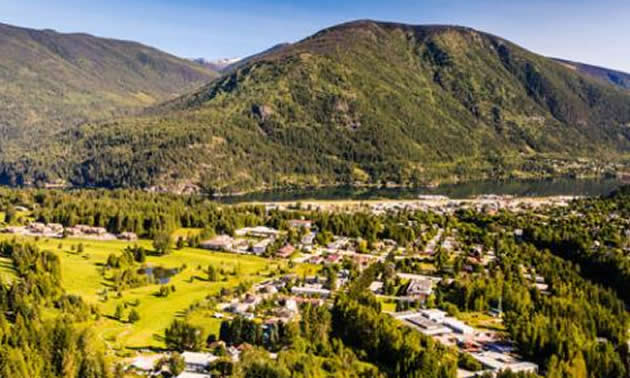Report draws important sketch of Columbia Basin

The recently released 2013 State of the Basin report explores the four pillars of the region – economic, social, cultural and environmental.
Leaving no stone unturned in its 8.6 million hectare territory, the Columbia Basin Rural Development Institute (RDI) has released the 2013 State of the Basin report.
In the works for several years, the 2013 report updates and builds on the work produced in the 2008 State of the Basin report. The 75-page long report and 16-page graphic-based snapshot report provide an important sketch of southeastern British Columbia.
“The goal is to benchmark and increase our collective understanding of well-being in the region and to promote discussion on where we are at and where we might want to go,” says Dr. Terri Macdonald, Regional Innovation Chair for the RDI. “In this report we provide a picture of this region at a given moment in time in a report that explores economic, social, cultural and environmental conditions and trends.”
Information Vital to the Basin
In 2006, the Columbia Basin Trust responded to long-standing requests for information on economic, social, environmental and other trends in the region by launching the State of the Basin initiative. Resulting from the work of project consultants, a volunteer working group, Columbia Basin Trust staff and more than 50 expert advisors, the first State of the Basin report was put together in 2008. Response to the 2008 project indicated that the State of the Basin initiative addressed an important need for information in the region, and that future iterations would be of benefit to local communities and organizations.
The Columbia Basin Trust transferred responsibility of the State of the Basin initiative in 2011 when a partnership was created with Selkirk College to create the Columbia Basin Rural Development Institute.
“The release of the 2013 report is really just the beginning of our work at the RDI,” says Macdonald. “We now look forward to working with communities to support their efforts in using this data.”
Extensive Research Provides Results
The report is loaded with valuable information that will enable community leaders, businesses, investors, non-profits and individuals to make decisions that will enhance the work already being done to make the region stronger.
Working on the four pillars of the region – economic, social, cultural and environmental – the report gauges issues like the business climate, consumer confidence and a breakdown of growth sectors. It also explores areas like traffic volumes on regional highways, high school completion rates in each community and volunteer trends. Many aspects of life in the Columbia Basin are touched on in the report.
“The RDI team is also working alongside researchers at the Selkirk Geospatial Research Centre on the development of the Digital Basin portal, which will provide residents with real-time, easy access to indicator and asset datasets relevant to our region,” says Macdonald.
This tool will allow residents to explore and compare geospatial data at regional, corridor and community levels and export related tables, charts, maps and analysis. The Digital Basin portal will be released in the Spring of 2014.

Nelson is one of the communities that is included in the report.
Residents Asked to Help Contribute to Data
The work on the report does not end with the release of the findings. The public has already been important in the compiling of the data – a telephone poll reached 400 residents this past summer and ongoing surveys of regional businesses through business retention and expansion projects across the region has included 555 surveys conducted – but there is still more work to be done.
“We are now anxious to hear from residents,” says Macdonald. “Does the current suite of indicators provide a comprehensive picture of well-being in our region? How might we improve or build upon these indicators? How can we best support communities in their collection and use of indicator data?”
Residents are encouraged to visit cbrdi.ca, to sign up for the RDI e-newsletter, and to explore the full text of the long report and the snapshot report. Access to the online survey can also be found using the links from the homepage.
The Basin-Boundary region included in the 8.6 million hectares includes the Regional District of Kootenay Boundary, the Regional District of Central Kootenay, the Regional District of East Kootenay, the community of Valemount and a portion of the Columbia Shuswap Regional District.
The Columbia Basin Rural Development Institute is based at the Selkirk College Castlegar Campus.
Learn more about the Columbia Basin Rural Development Institute and join us on Facebook.





Comments